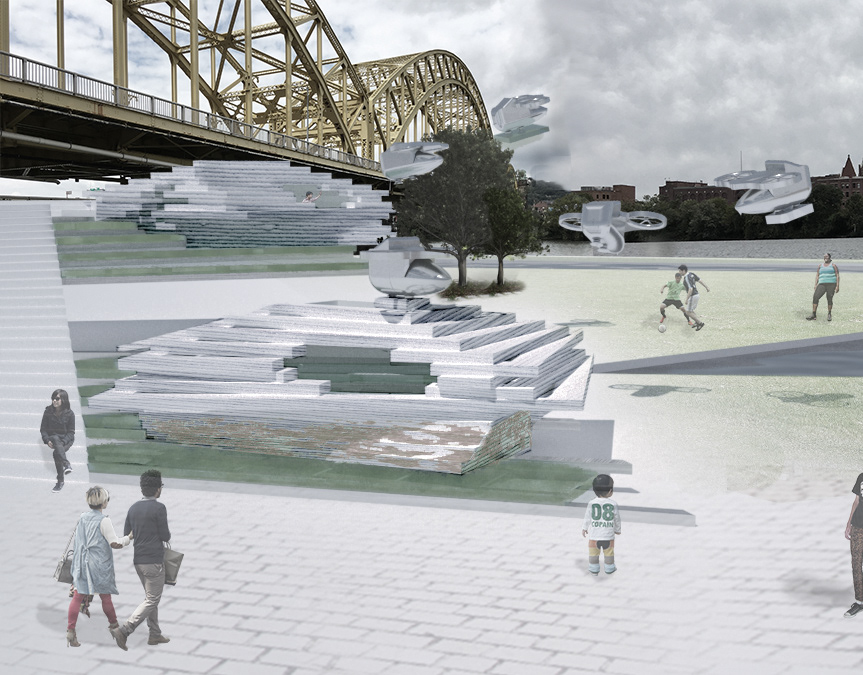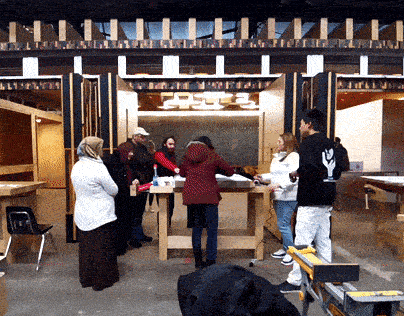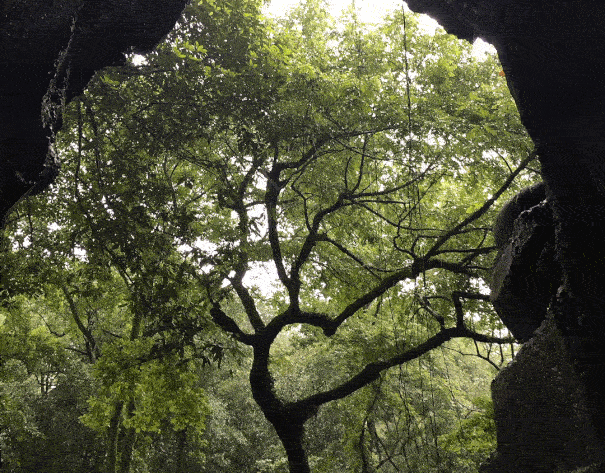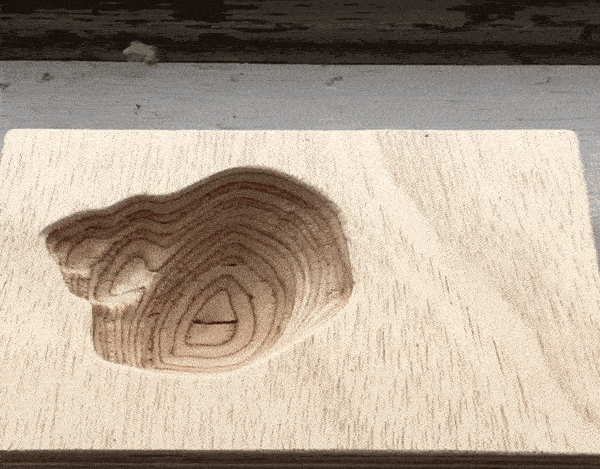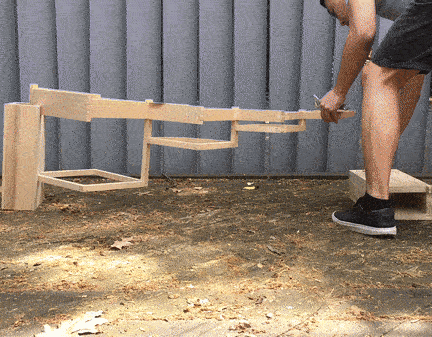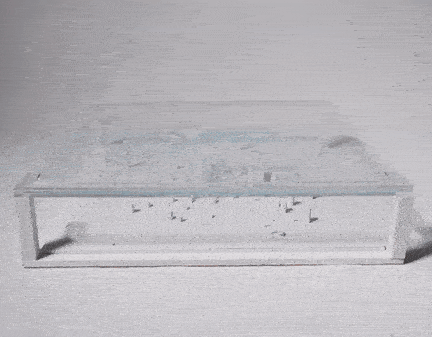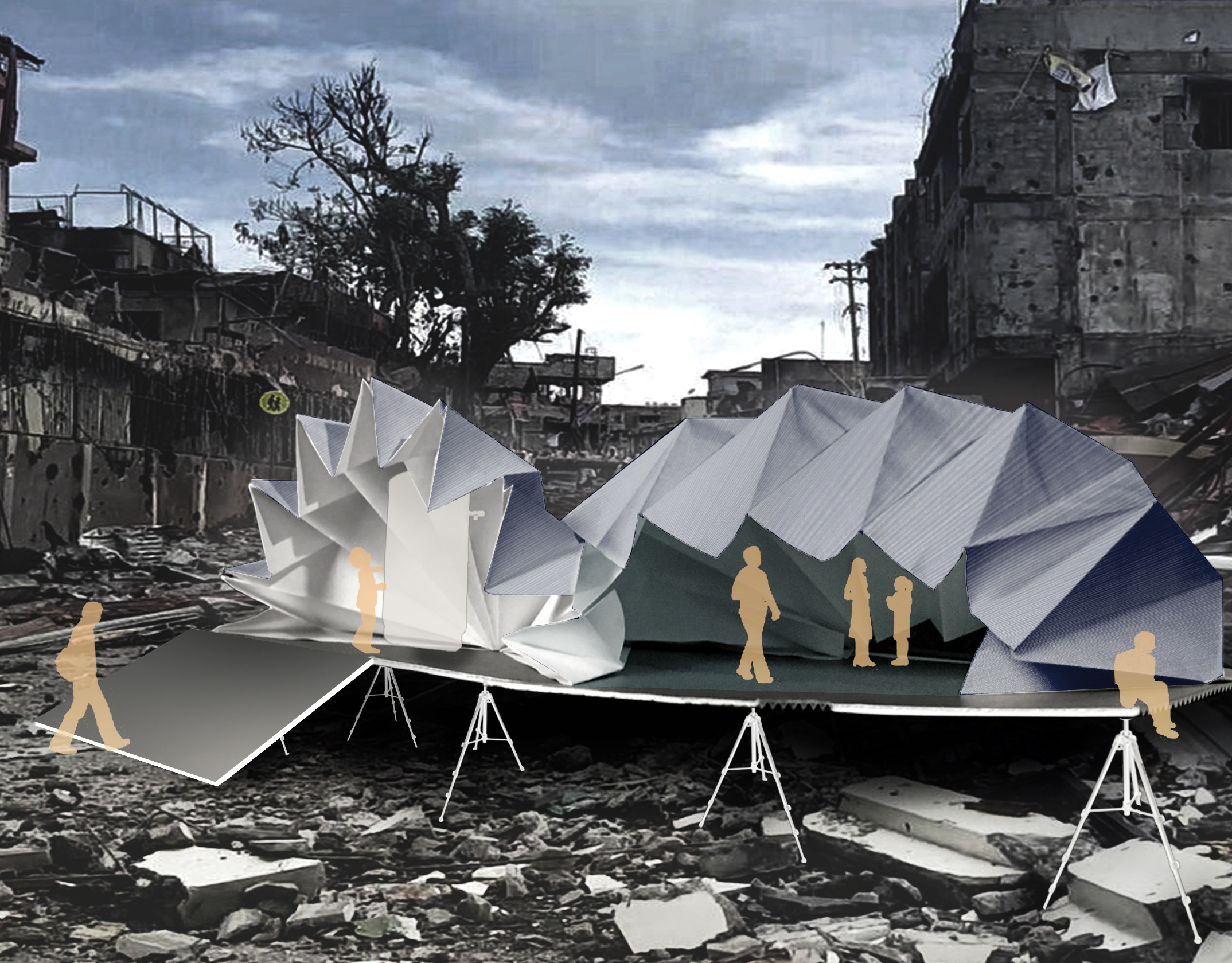Photography Credit: Christina Brown
In collaboration with: Scarlet Tong, Connie Chau, & Nicholas DesRoches
Project Statement
The Anthropocene marks the beginning of the age in which human activity affects the planet as a whole. No longer do our individual decisions and consequences impact only our perceived sphere of influence, but rather, affect the well-being of our ecosystem on a macro level. Babbling Creatures portrays the inherent complexities in a small scale system featuring several simple paper sculptures. The misdirection and flow of information constantly alter the state and behavior of those creatures to reveal the larger consequence of our seemingly insignificant daily actions.
Our dissociation with nature, through the construction of artificial landscapes, leads us to forget about the fundamental bond we share with other living beings in our ecosystem. Compared to the permanence of the physical erection of new apparatus to facilitate our own societal concerns, the rate by which nature is contaminated and destroyed as a consequence of our selfish pursuits far exceeds the rate in which mother nature can heal herself. To illustrate the fragile and weakened state of our planet’s ecosystem, the project is constructed out of translucent paper, embodying the fleeting beauty of nature amidst a sea of external threats.
Babbling Creatures is a family of paper interactive objects whose reactions are informed by audience and musician movements. Each creature harvest motion and human activity input and translates it into different physical behaviors. The creatures represent the natural world which is complex, interwoven and exists in a delicate equilibrium vulnerable to change.
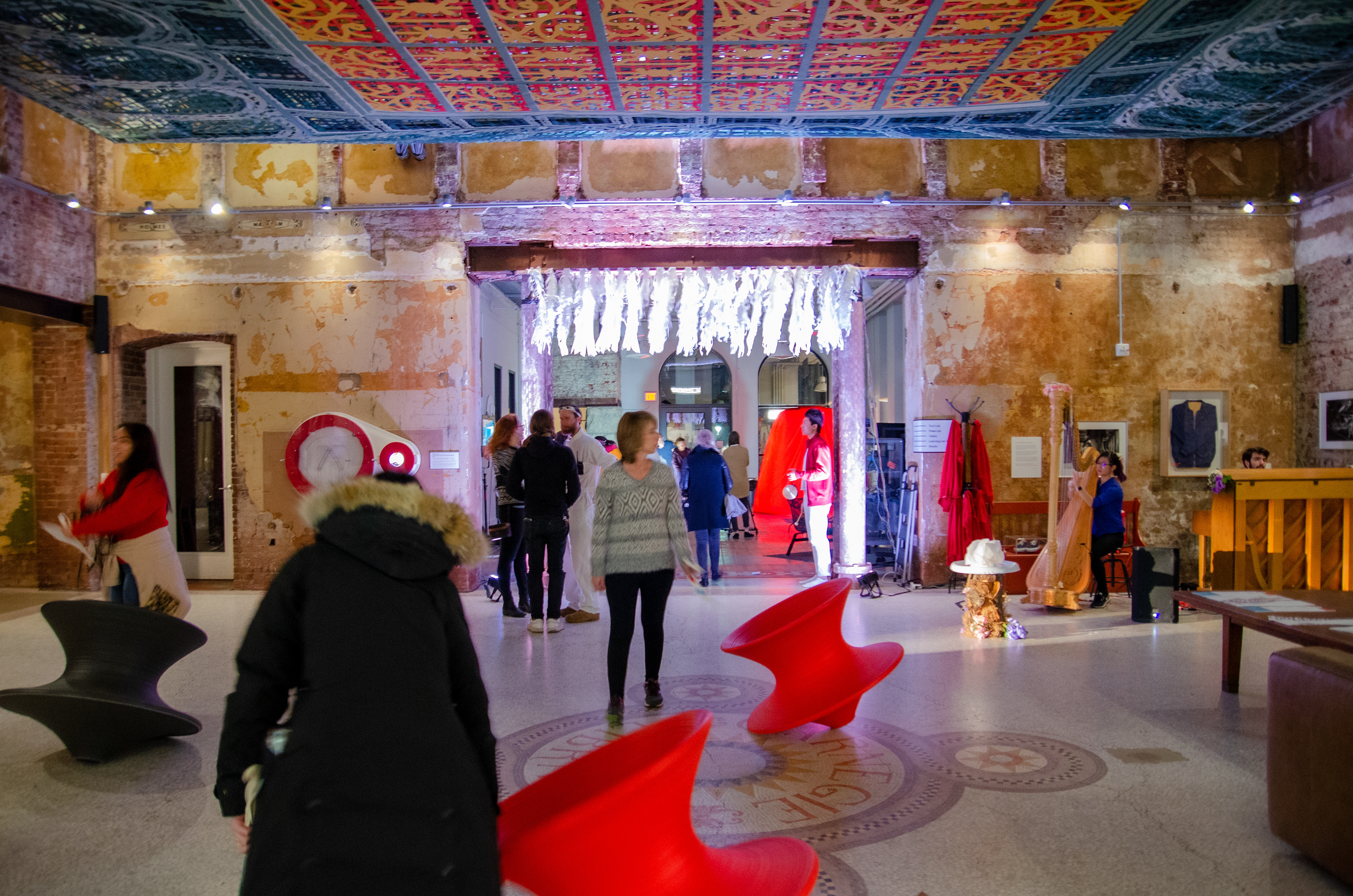
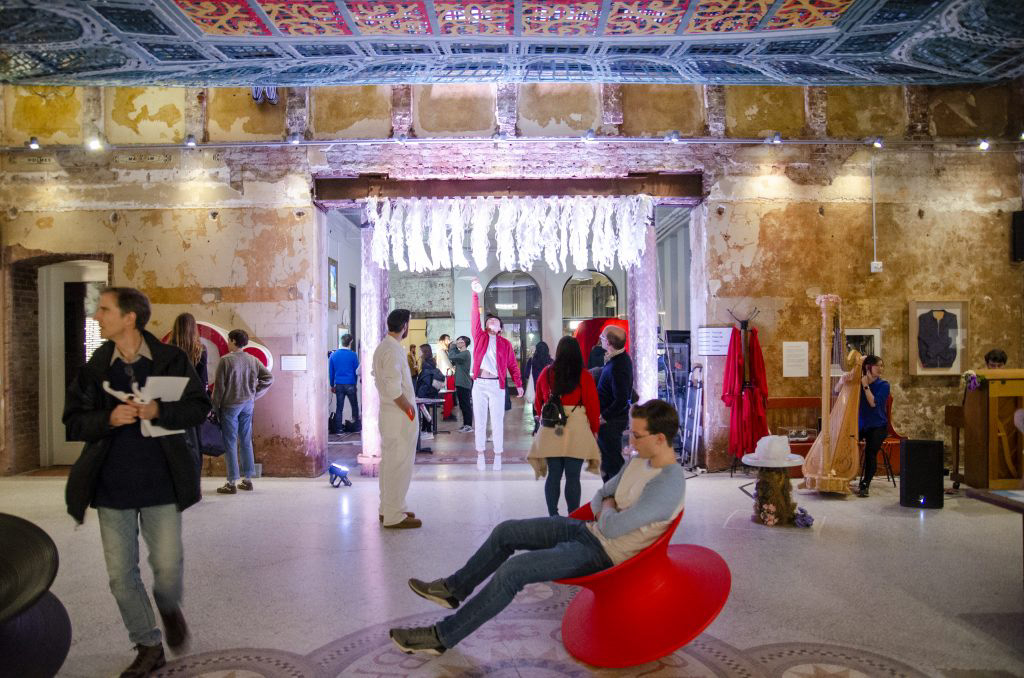

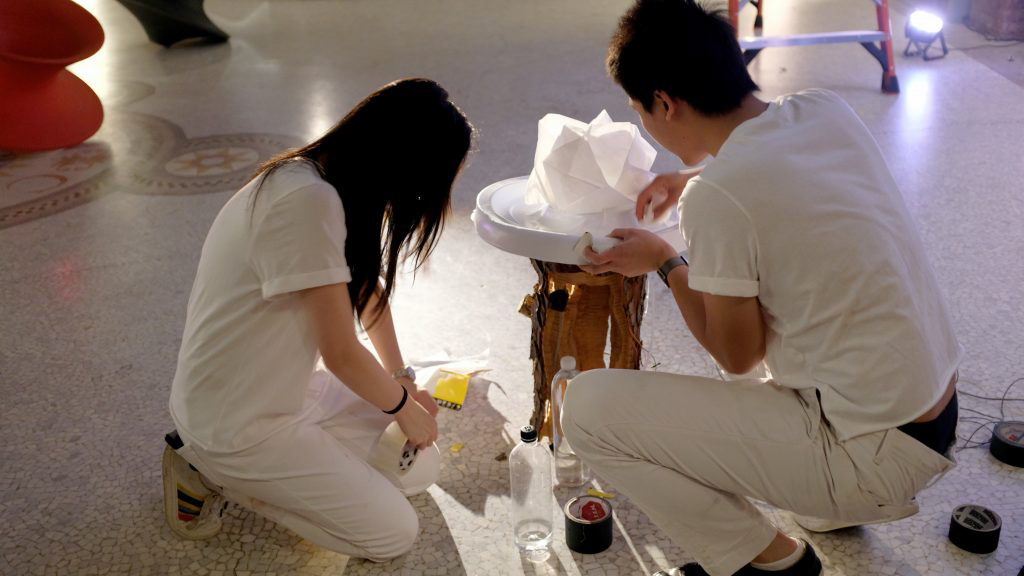
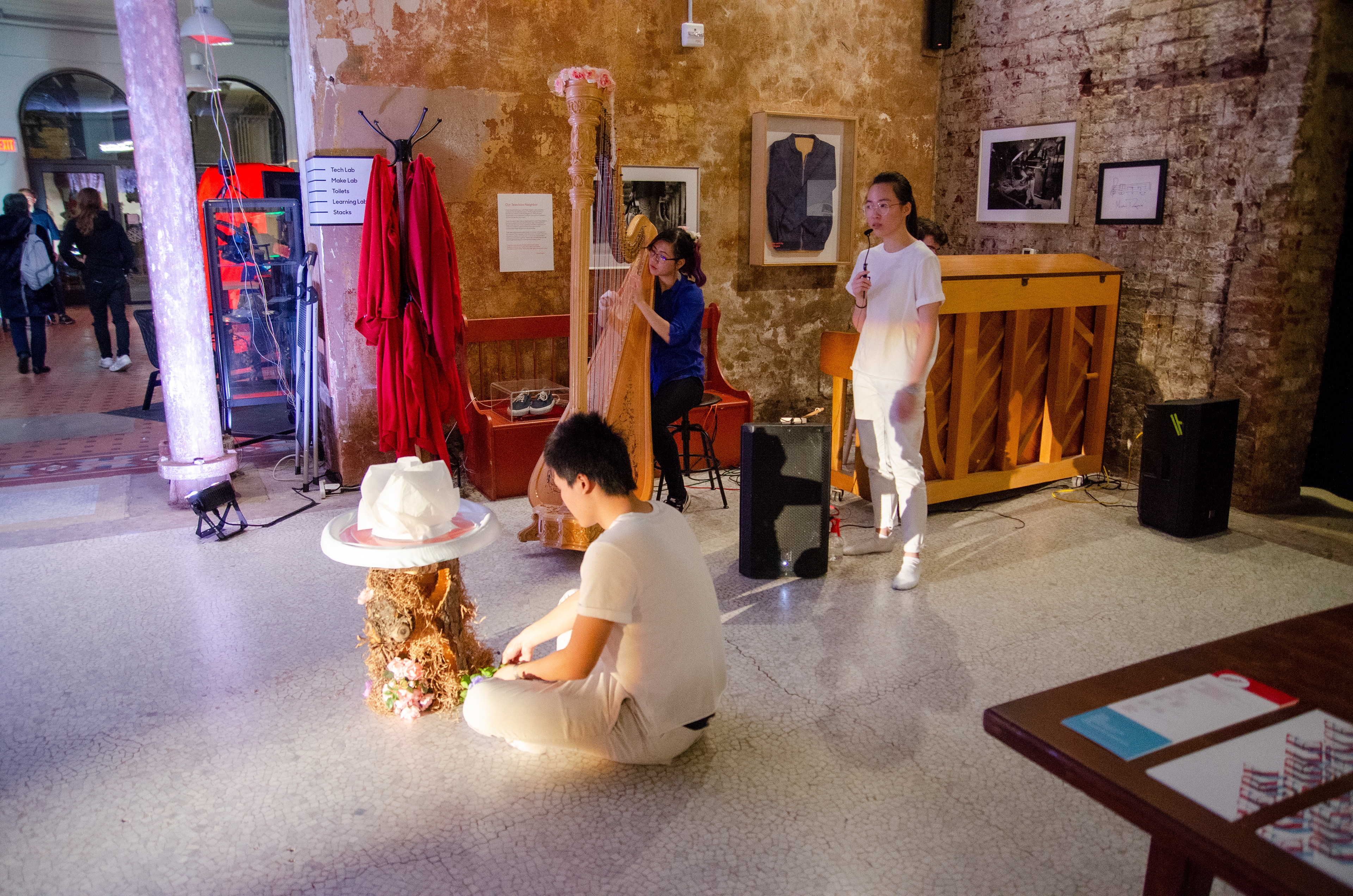
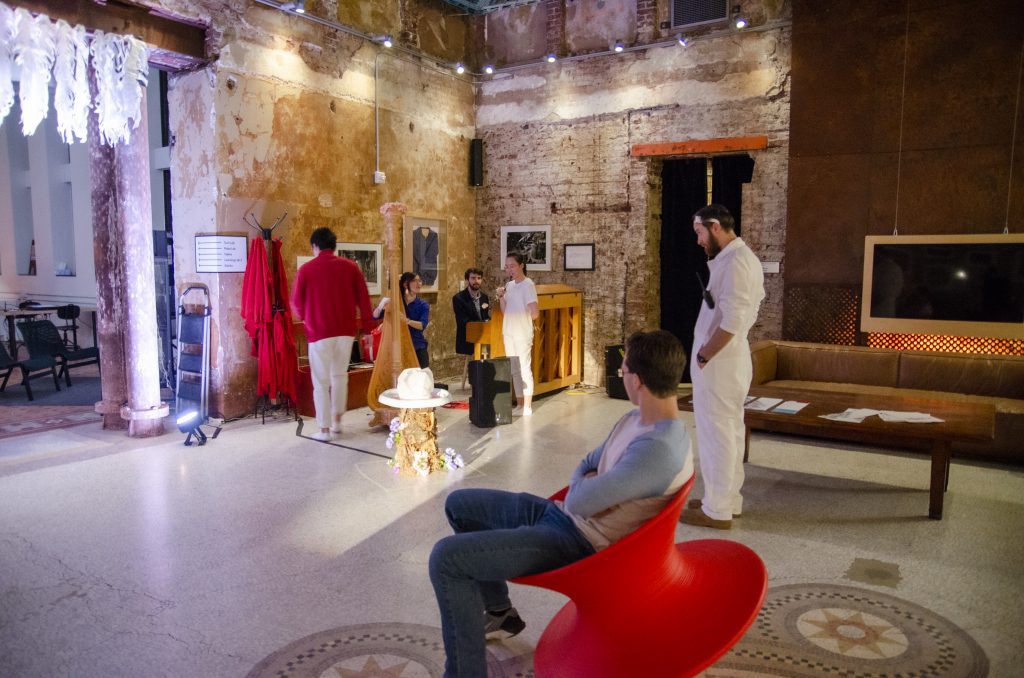

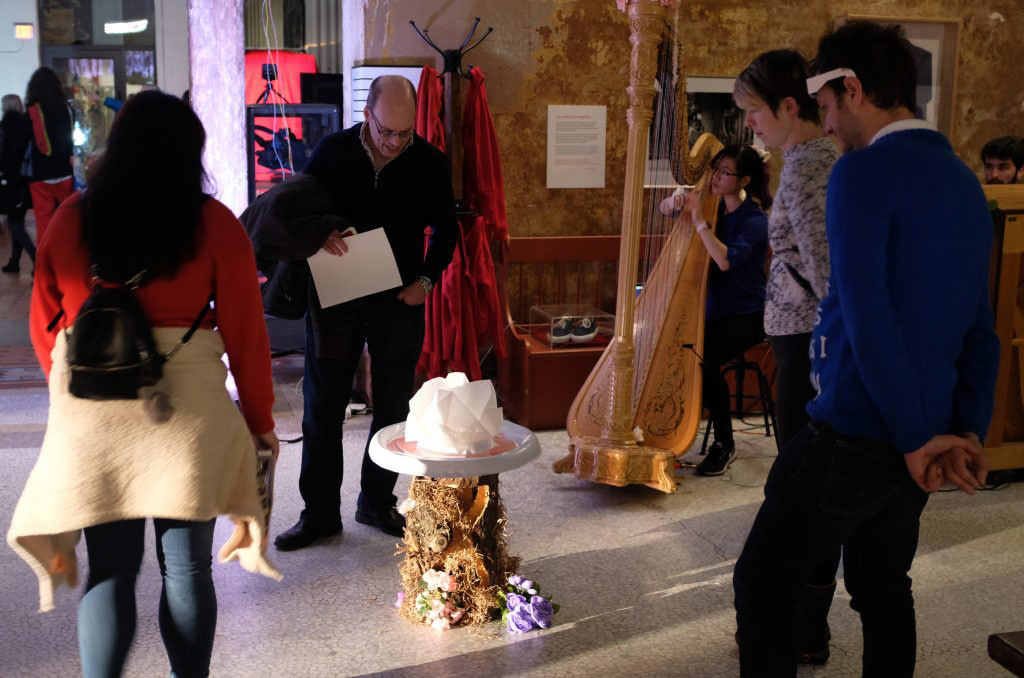


Photography Credit: Christina Brown
Project Process Documentation
Throughout the project, we spent the majority of the time realizing the physical aspect of the project. From the array of willow leaves to the rose and all of the technology that was implemented there, we quickly realized that we had to scale back in terms of scope to ensure that each creature would have a presence and role respective of how much time was invested in bringing it to fruition. Much of the time spent during installation day was related to the installation of the willow leaves. Although simple in the aesthetic, mounting paper, wires, and servos to a rugged, dusty surface, lighting up the leaves and positioning the sonar were time sinks and required multiple attempts. Our strategy for handling all of the external power and wires was to use a sheet of plywood to mount the breadboards and Arduino

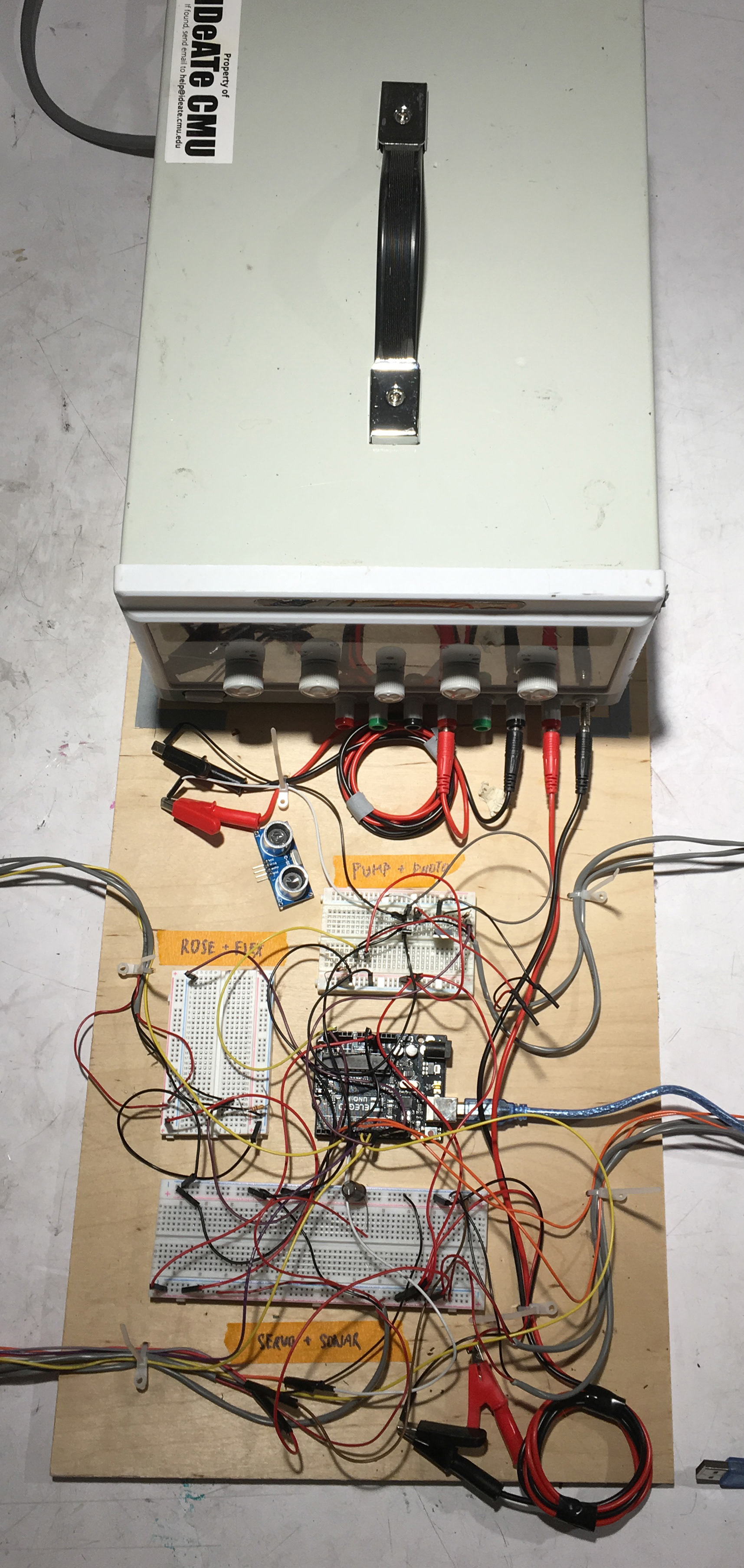
to. As we got closer and closer to the final installation, we realized that we were spending exorbitant amounts of time setting up the power box and cleaning up the power box after our work. As so, we claimed a power box that would be a part of our board, allowing for the project to be carried in almost all of its electronic entirety using one sheet of plywood. We also, considering the transportation and risk involved with long wires, decided to use zip-ties to secure the plethora of wire bundles. The wiring, although it was bundled neatly, was also a challenge given the sheer abundance and length. Unraveling each bundle, merging bundles that were headed to a similar direction, and taping to unforgiving surfaces definitely slowed our progress, but also made the preparation worth the effort! By having a project that focused mainly on creating a space, much of the coding became more simple naturally which allowed us to fully immerse ourselves in the costuming, lighting, and staging of the environmental installation.
In retrospect, scaling down the size of the installation and broadening the number of creatures that were smaller in size may have contributed to a more network feeling, though it would have been much more difficult to implement technically and in regards to the designing and fabricating of more pieces and parts. In addition, our performance could have been improved and would have been more convincing given more time practice all of the movements and actions. Looking forward, we both want to continue to explore the performative aspects that we delved into for this project as well as further expand on our technical know-how and capacity.
To learn more about the project's design process, code, and lessons, follow this link!
